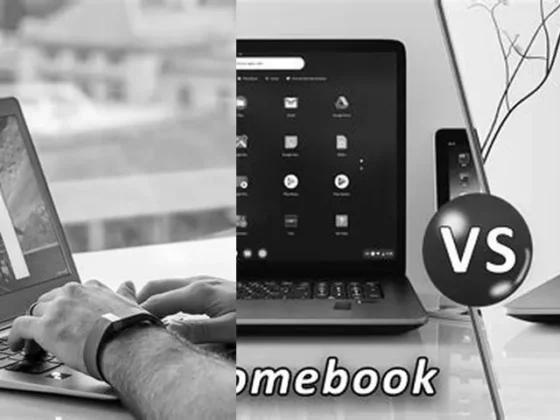How Can I Run Blender Smoothly on a Low-End Laptop? – Are you eager to unleash your creativity with Blender but held back by your low-end laptop? Fear not, because in this article, we’ll show you how to run Blender smoothly on even the most modest of hardware. Say goodbye to frustrating lags and crashes, and say hello to a world of 3D design possibilities. Whether you’re a beginner or a seasoned pro, we’ve got you covered with tips, tricks, and optimizations that will make your low-end laptop feel like a high-end powerhouse. So, buckle up and get ready to blend your way to success!
Understanding Blender’s System Requirements
Before diving into the specifics of running Blender on a low-end laptop, it’s crucial to understand what Blender demands from your hardware. As mentioned, Blender can operate on a laptop that meets its minimum system requirements. These requirements are the baseline for running Blender at the most basic level. Let’s break down these requirements:
- RAM: At the very minimum, your laptop should have 4GB of RAM. However, for a more seamless experience, 8GB to 16GB of RAM is advisable. More RAM allows Blender to handle complex scenes and simulations more effectively.
- Disk Storage: Adequate disk storage not only means room for the software itself but also space for your projects and assets.
- Graphics Card: While not entirely mandatory for basic functions, a dedicated graphics card can significantly improve rendering times and viewport performance.
- Processor: A capable processor is key to overall performance in Blender. A minimum of a 4-core processor is recommended, but 6 cores or more will provide a much smoother experience.
It’s important to note that while these are the minimum requirements, they are not the ideal. The better the specs of your laptop, the more efficiently Blender will run. You can find the detailed minimum requirements on the Blender website.
Optimizing Blender Performance on a Low-End Laptop
Adjusting Blender’s Settings
Optimizing Blender for a low-end laptop starts with tweaking the software settings to reduce the load on your system:
- Lower the subdivision levels in your viewport to maintain a responsive workflow.
- Utilize the Simplify option in the Render settings to limit the complexity of your scenes.
- Reduce the number of undo steps in the User Preferences to free up RAM.
Managing Your Projects Efficiently
Project management is key in maximizing Blender’s performance:
- Break down complex scenes into simpler, separate Blender files.
- Make use of Blender’s linking and appending features to work with assets without overloading your scene.
- Purge unused data blocks regularly to keep your .blend files lean.
Hardware Upgrades
If possible, consider upgrading your laptop’s hardware:
- Increasing your RAM to at least 8GB can provide immediate performance improvements.
- Replacing your hard drive with an SSD will speed up loading times and overall responsiveness.
Leveraging Blender’s Features for Low-End Hardware
Using Blender’s CPU Rendering
While GPU rendering is faster, Blender’s CPU rendering capabilities are more than competent and often the only option on low-end laptops without dedicated graphics cards. Here’s how to make the most of it:
- Enable multi-threading in the performance tab to utilize all available CPU cores.
- Experiment with tile sizes in render settings; smaller tiles are often better for CPU rendering.
Opting for Eevee Instead of Cycles
Eevee, Blender’s real-time render engine, is far less demanding than Cycles and can produce high-quality results:
- Use Eevee for real-time rendering and quick previews of your work.
- Take advantage of Eevee’s simplified shading and lighting techniques to speed up workflows.
Workflow Tips for Enhanced Performance
Embrace Low-Poly Modeling
Adopting a low-poly modeling approach when working on a low-end laptop can significantly reduce the strain on your system:
- Focus on creating assets with a minimal number of vertices without compromising too much on detail.
- Use modifiers wisely to add complexity only where needed.
Smart Usage of Modifiers
Modifiers can be a double-edged sword. Use them strategically:
- Apply modifiers only when necessary to avoid unnecessary calculations.
- Consider the stack order of modifiers to optimize performance.
Efficient Texturing and Material Creation
Textures and materials can be resource-intensive. Here’s how to optimize them:
- Use procedural textures where possible, as they can be less RAM-intensive than bitmap textures.
- Keep your texture resolutions as low as possible while maintaining visual fidelity.
Utilizing External Resources
Even with a low-end laptop, you can leverage external resources to enhance your Blender experience:
- Consider using a cloud rendering service for final renders to bypass your laptop’s limitations.
- Utilize online libraries for assets and textures to save time and computational power.
Conclusion: Making the Most of Your Hardware
Running Blender on a low-end laptop is undoubtedly challenging, but with the right adjustments and techniques, it’s possible to create an enjoyable 3D modeling and animation experience. Remember to manage your expectations, as complex scenes and high-resolution renders will still be limited by your hardware’s capabilities. Nevertheless, by optimizing Blender’s settings, managing your projects wisely, and potentially upgrading your hardware, you can push your low-end laptop to its full potential.
While you may not be able to run Blender with the same ease as on a high-end machine, understanding and working within the confines of your hardware will allow you to continue creating and learning. Who knows? With enough practice and optimization, you might just be surprised at what you can achieve with the resources at hand.
FAQ & Related Questions about Running Blender on a Low End Laptop
Q: Can I run Blender on a low end laptop?
A: Yes, you can run Blender on a low end laptop, but it may require some optimization and adjustments to ensure smooth performance.
Q: How do I know if my laptop can run Blender?
A: To run Blender, you’ll need to be on Windows 8.1, 10, or 11, macOS 10.3 Intel or 11.0, or Linux. Additionally, your laptop should have at least 8GB of RAM.
Q: What are the minimum requirements for running Blender?
A: Blender can run on updated Windows, macOS, and Linux machines. It is even capable of running from a USB stick, meaning no installation or internet connection is required once you have a downloaded version of Blender.
Q: How can I optimize Blender for better performance on a low end laptop?
A: To optimize Blender for better performance on a low end laptop, you can try reducing the viewport resolution, disabling unnecessary add-ons, using simplified materials, and rendering in smaller dimensions.
Q: Are there any tips for making 3D work enjoyable on any machine?
A: Yes, there are a few tips and general principles to make your 3D work enjoyable on any machine. Some of these include optimizing your scene, using efficient modeling techniques, and utilizing proxy objects for complex scenes.


